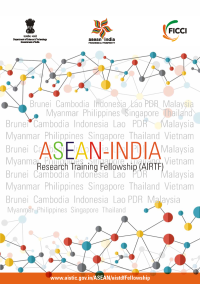Fifty fellowships are available for young scientists and researchers under the ASEAN-India Research Training Fellowship Scheme (AIRTF), to study at Indian academic and R&D institutions. The fellowships are for a period of up to six months and include travel and financial support. The fellowships are intended to build capacity among young ASEAN researchers in science and technology and to further strengthen the bond between India and ASEAN member states.
In this issue:
30th NACA Governing Council Meeting, China; Dr Huang Jie elected as the next Director General of NACA; Expert Consultation on Genetically Responsible Aquaculture; Launch of AGRISI: Aquatic Genetic Resource System of India; Aquatic animal epidemiology training course held at NBFGR; Asia-Pacific Laboratory Proficiency Testing Workshop; Proceedings of the FishAdapt Conference; Quarterly Aquatic Animal Disease Report, July-September 2018; Centex Shrimp International Training Course on Biology and Pathology of Penaeid Shrimp; INFOFISH World Shrimp Trade Conference and Exposition.
NACA welcomes Dr Huang Jie as the incoming Director General of NACA. He will serve a five year term beginning in May 2019. Dr Huang succeeds Dr Cherdsak Virapat, who will complete his own five-year term in April. Dr Huang was elected at the 30th Governing Council Meeting held 26-27 March in Guangzhou, China. Dr Huang, a Chinese national, obtained his BSc on virology in Wuhan University in 1987, an MSc in the Wuhan Virology Institute, Chinese Academy of Science in 1990, and his PhD on marine biology in the Ocean Institute in 2010.
The 30th Governing Council was held in Guangzhou, China, 26-27 March. 74 participants attended the Governing Council Meeting representing fifteen member governments, with the Kingdom of Saudi Arabia attending as an observer. The host Government, China, was elected as Chair of the 30th Governing Council. Hong Kong SAR was elected as Vice Chair. Key outcomes included the election of Dr Huang Jie as the next Director General of NACA, and preparations for the Global Conference on Aquaculture 2020.
Climate variability and change are affecting hydro-meteorological cycles and altering aquatic ecosystems, driving shifts in physical and chemical processes, ecological communities and the distribution and abundance of species. These changes have implications for fisheries management, food security and the livelihoods of more than 600 million people worldwide. The FishAdapt conference was held in Bangkok from 8 to 10 August, 2016. It provided a forum to share practical experiences in understanding the vulnerabilities associated with climate change and ocean acidification and the development of risk management and adaptation strategies.



